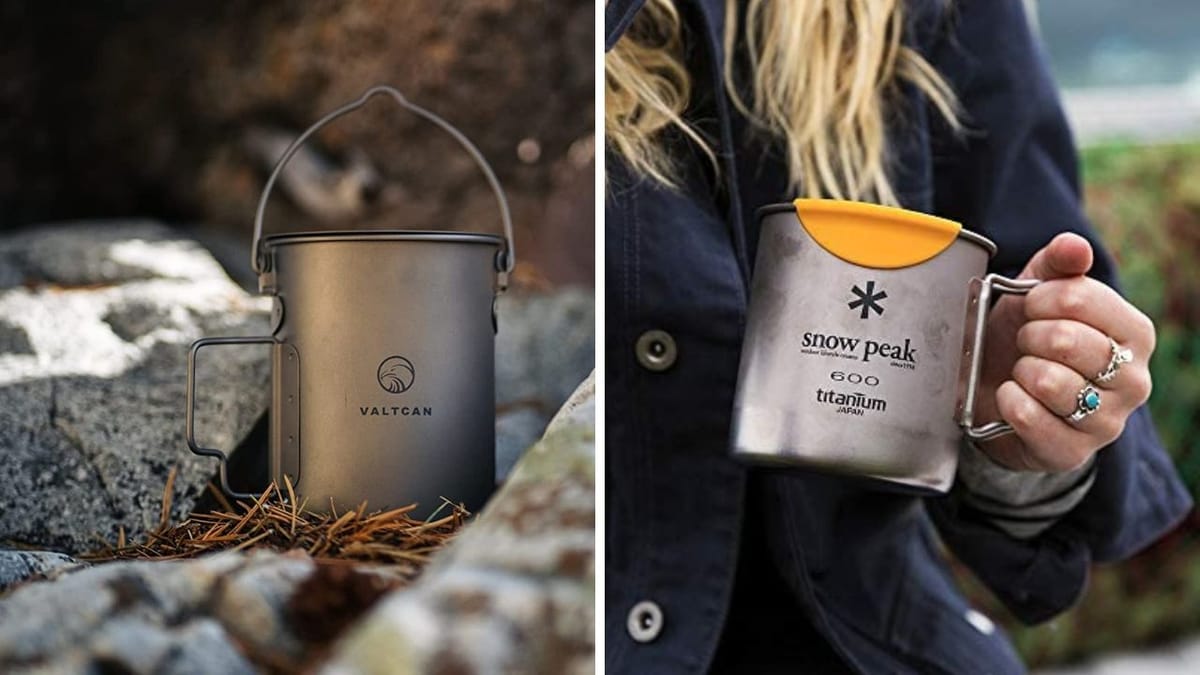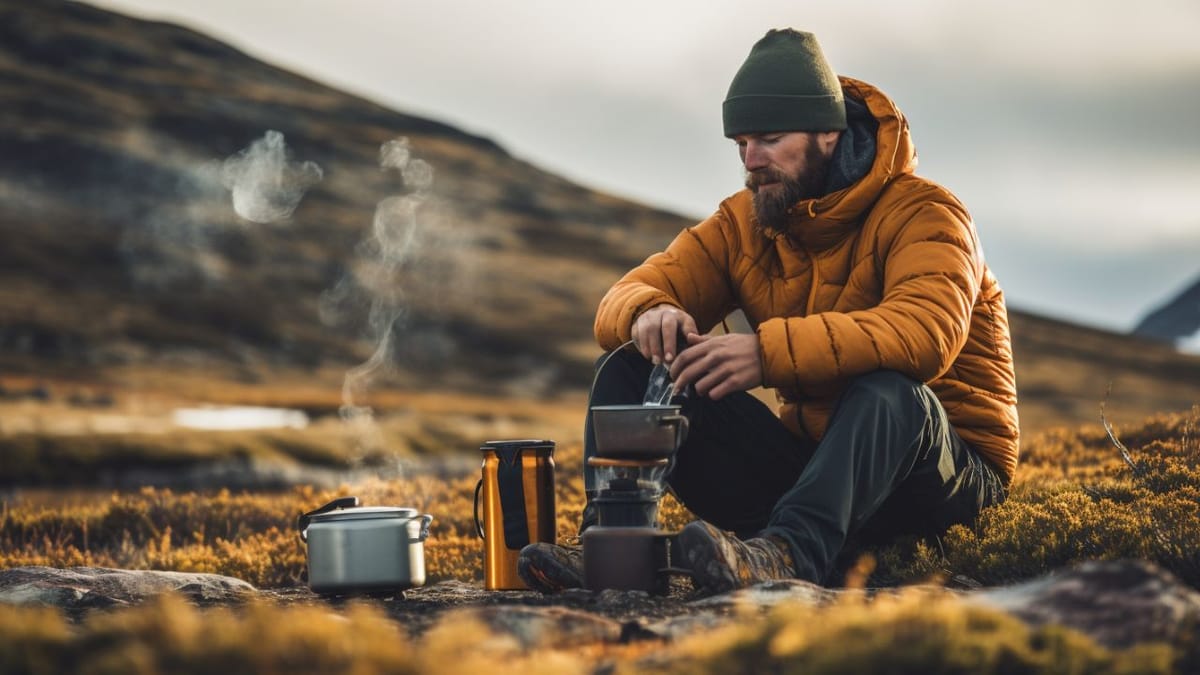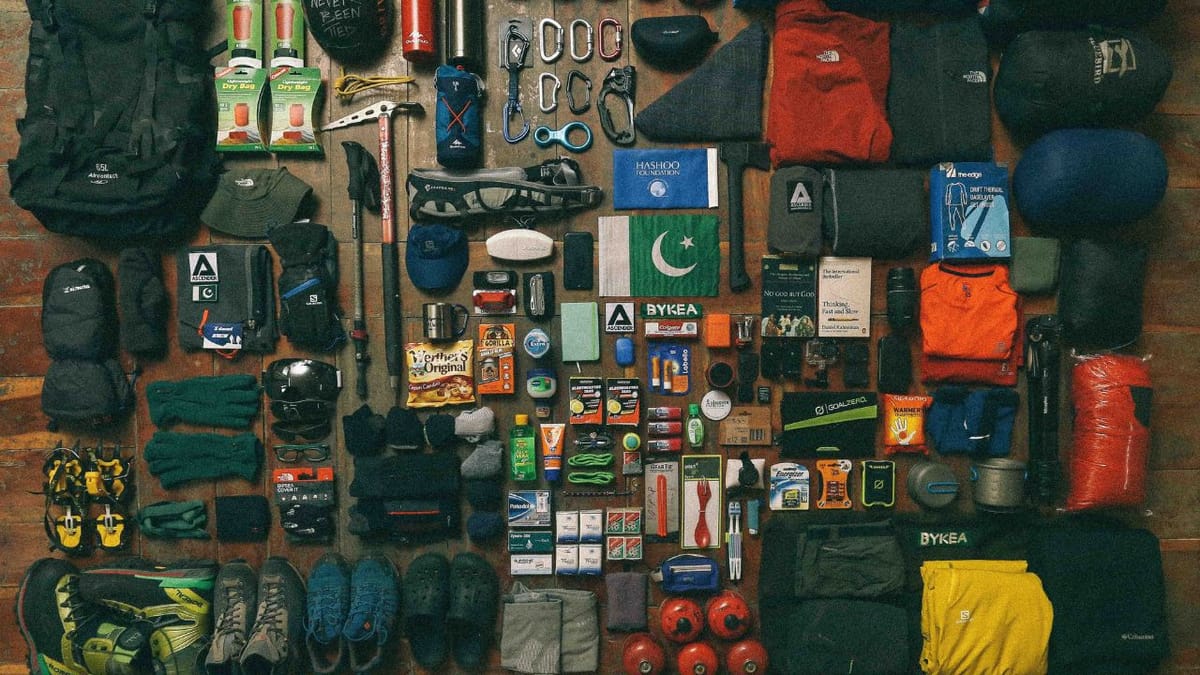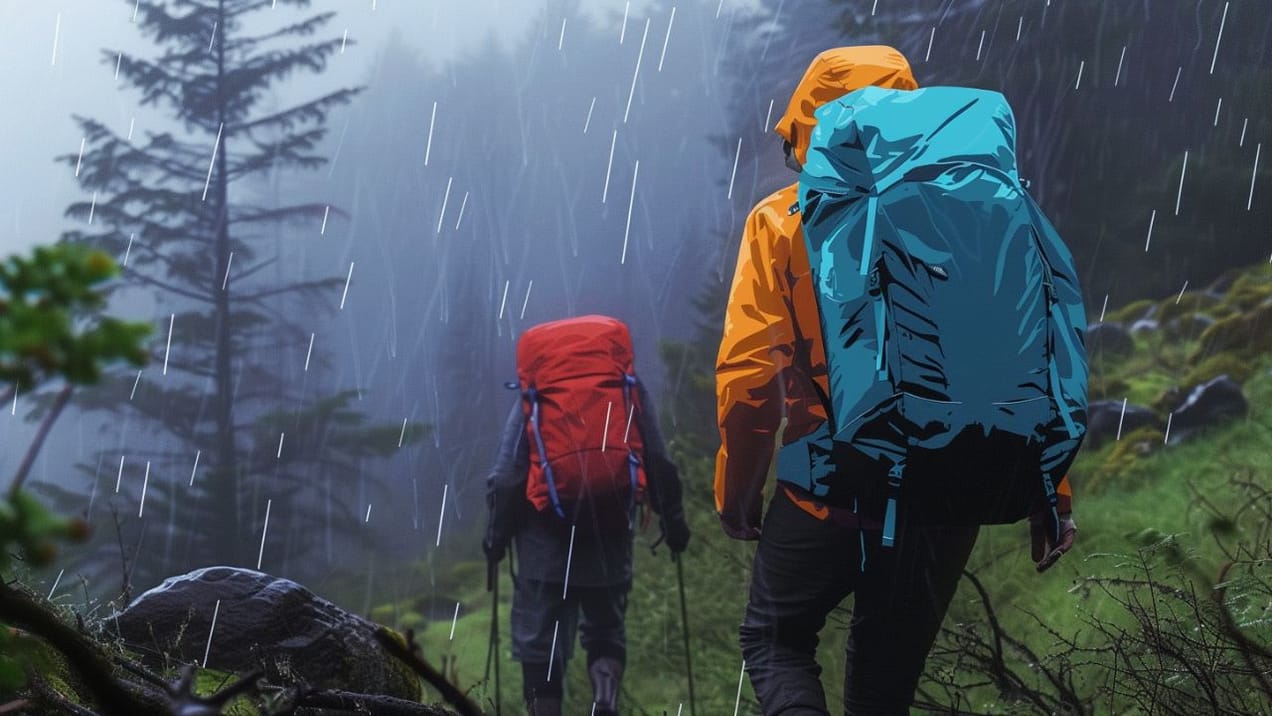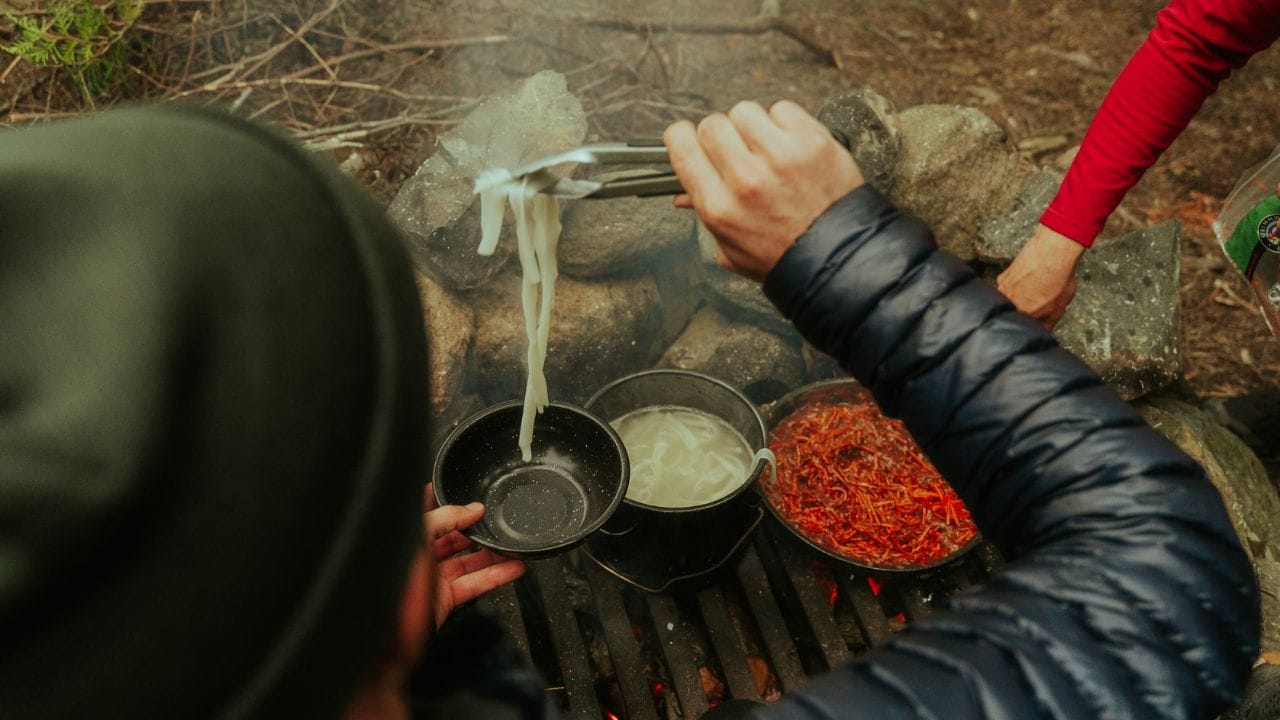
Backpacking Food Ideas | Meal Planning for Every Diet
Discover quick, delicious backpacking food ideas! Find meals that fuel your hike and fit in your pack with ease.
Are you gearing up for your next backpacking trip and wondering what to pack for meals?
You're not alone!
When it comes to backpacking, one size definitely does not fit all, especially in the world of dietary needs. Whether you're a keto enthusiast, a proud paleo follower, or a gluten-free guru, your backpacking meals should be as unique as your diet.
And let's be honest, there's a special kind of joy in crafting your own backpacking meals that not only taste great but also fuel your journey.
Let's dive into the world of diet-specific backpacking food ideas and discover how you can keep your energy up while satisfying your taste buds!
Disclosure: We only recommend things we’ve personally used or come highly recommended by trusted peers. Using one of our referral links might give us a small commission which helps support this website at no additional cost to you. If you’d like to learn more check out our disclaimer page.
Understanding Diet Needs on the Trail
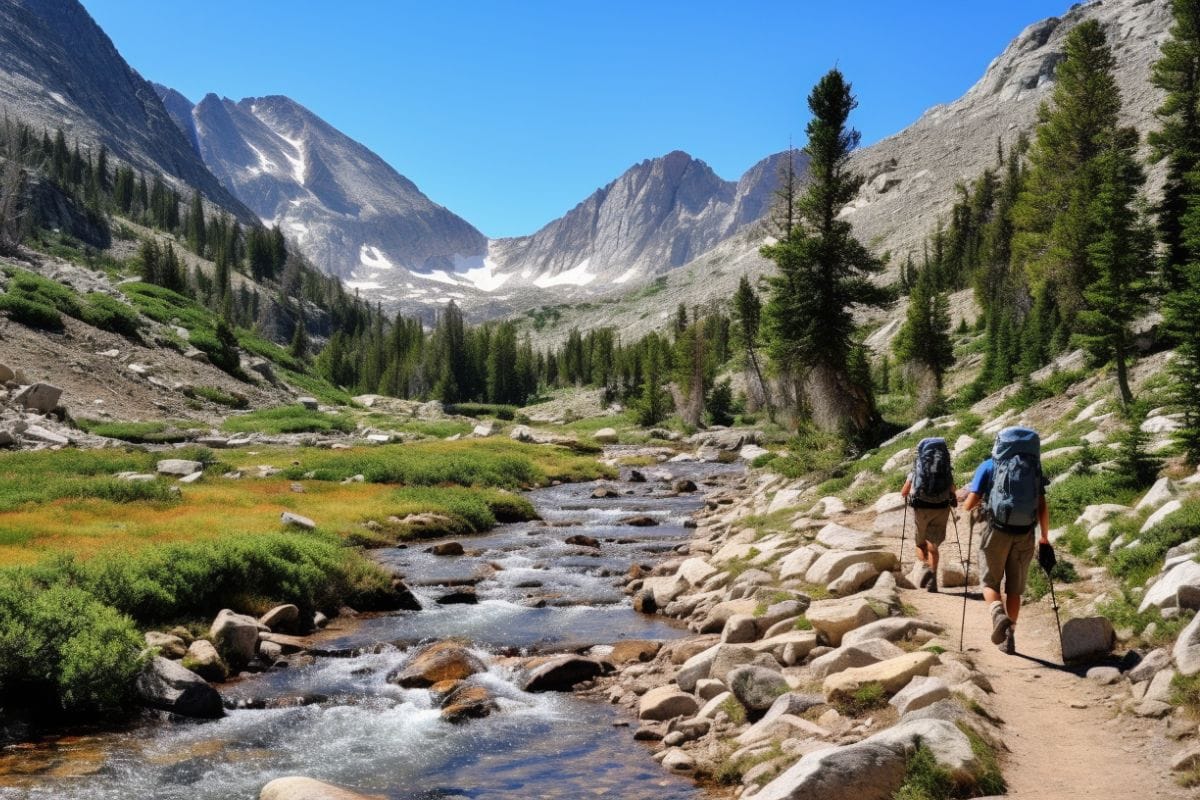
The Importance of Calorie-Dense and Nutritious Meals
When you're out on the trail, your body is your most valuable asset, and it needs the right fuel to keep going.
Backpacking is an energy-intensive activity, and choosing calorie-dense foods is crucial.
But it's not just about calories; it's about nutritious calories.
This means finding a balance between macronutrients (carbs, proteins, fats) and micronutrients (vitamins and minerals) to keep your body in top shape.
Brands like Sahale Snacks offer a variety of gourmet trail mixes that are both nutritious and delicious.
Brief Overview of Paleo, Keto, Gluten-Free, and Other Diets
- Paleo: This diet focuses on foods that our Paleolithic ancestors would have eaten. Think meats, fish, nuts, leafy greens, regional veggies, and seeds. Paleo-friendly backpacking food can include jerky (like Chomps or Nick's Sticks), nuts, and dehydrated fruits and vegetables.
- Keto: The ketogenic diet is all about low-carb, high-fat foods that force the body into a state of ketosis, where it burns fat for fuel. For backpackers, this could mean packing foods like nut butters (check out Justin's or NuttZo for portable packets), cheese, and even keto-friendly bars like those from Quest Nutrition.
- Gluten-Free: Gluten-free doesn't mean taste-free! Whether due to celiac disease or personal preference, avoiding gluten is crucial for many. Fortunately, there are plenty of options, from gluten-free instant oatmeal by Bob's Red Mill to backpacking meals from Mountain House that cater to gluten-free needs.
How Backpacking Trips Influence Dietary Needs
The great outdoors demands a lot from your body. Longer or more strenuous trips mean you'll need more calories and a higher intake of proteins and fats to maintain your energy levels.
Also, consider the climate – in colder environments, your body burns more calories to stay warm, so pack accordingly.
- For instance, on a challenging mountain hike, you might want to bring along extra packets of Justin's almond butter for a quick protein and fat boost.
- Or, if you're trekking in a colder climate, consider packing some hot meal options like Mountain House or Peak Fuel (my favorite for high protein content) freeze-dried meals, which just require boiling water and provide a comforting, calorie-rich end to a long day.
Planning Your Meals
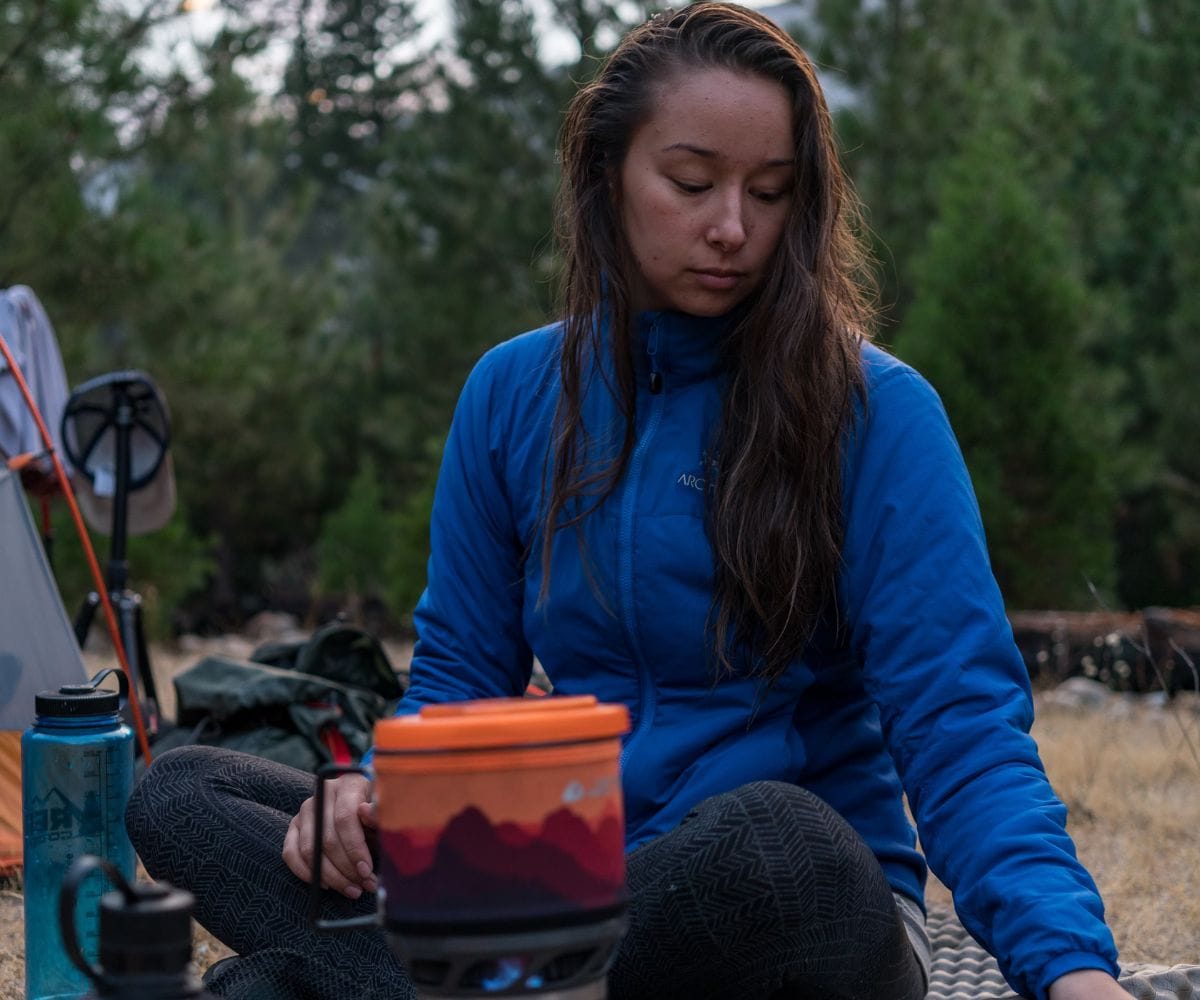
How Much Food and How Many Calories You Need
Alright, let's talk numbers! When you're backpacking, the average person burns between 2,500 to 4,500 calories per day, depending on factors like your weight, the terrain, and the weight of your pack.
- Another simple way to estimate your needs is to multiply your weight in pounds by 18-22 calories. This range accounts for moderate to strenuous hiking.
- For example, if you weigh 150 pounds, you're looking at about 2,700 to 3,300 calories per day. But remember, this is just a ballpark figure.
Listen to your body; it's the best indicator of your needs.
This varies, of course. If you're hiking through challenging terrains like the Rocky Mountains, you might need to bump up those calories.
Lightweight, high-calorie foods are your best friends here.
Think nuts, dried fruits, and energy bars. Brands like Clif Bar and Kind Snacks offer a range of high-calorie options that don't weigh you down.
The Role of Proper Food Storage in Backpacking
Now, let's chat about keeping that food of yours safe and sound.
Proper food storage isn't just about convenience; it's a safety measure against wildlife encounters and preserving the integrity of your food.
Bear-proof containers or bags are a must in many areas. Brands like BearVault offer containers that are both bear-resistant and easy to pack.
And don't forget about critter-proofing! Mice and squirrels can be just as pesky, so hanging your food or using airtight containers can be crucial.
Tips for Meal Planning and Avoiding Carrying Too Much Food
Planning is key! Here are some tips to help you pack effectively:
- Plan Each Meal: Write down each meal and snack for each day. This will help you avoid the "just in case" overpacking mindset.
- Focus on Nutrient Density: Choose foods that provide the most nutrition and energy for their weight. For instance, dehydrated meals are lightweight, easy to prepare, and can be quite nutritious. Brands like Good To-Go offer a variety of dehydrated meals that cater to different dietary needs.
- Pack Smart: Use zip-lock bags to repackage foods to save space and reduce weight. Also, consider repackaging liquids like olive oil into smaller, leak-proof containers.
- Balance Variety with Simplicity: While you want some variety in your meals, remember that simplicity often works best on the trail. Simple meals that require minimal preparation can be a blessing after a long day of hiking.
- Remember the Extras: Don't forget condiments, spices, and quick energy boosters. Single-serve packets of condiments (like mustard or mayo) and spices (like curry powder or garlic powder) can elevate a simple meal. Quick energy boosters like GU Energy Gels can be lifesavers on a tough trail.
- Practice at Home: Before your trip, try preparing and eating your planned meals at home. This will help you fine-tune portions and preparation methods.
Paleo Backpacking Meals
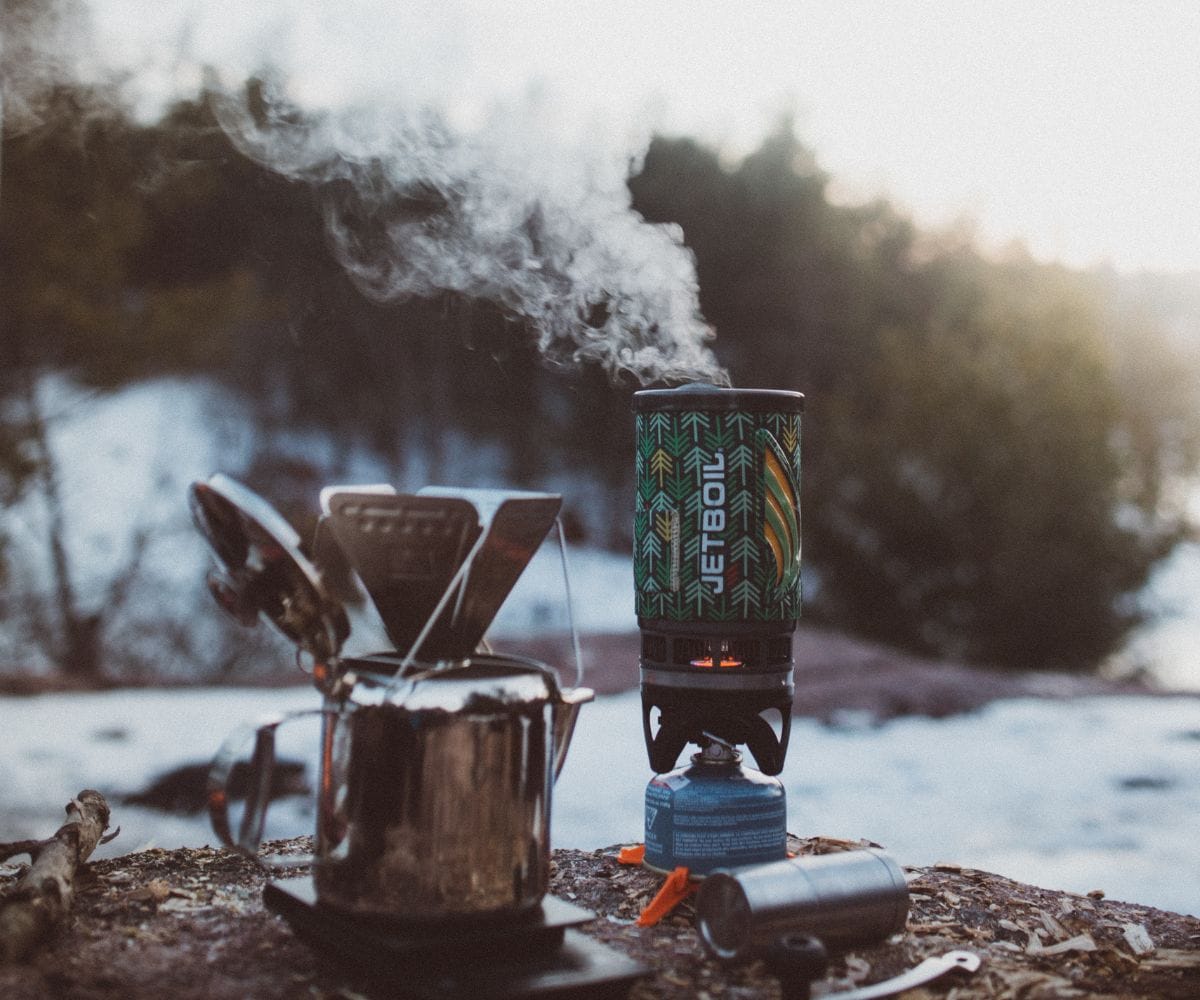
Going back to our ancestral roots doesn't mean you have to compromise on flavor or variety while on the trail.
Let's explore some delicious, paleo-friendly meal ideas that'll keep you fueled and satisfied.
Paleo-Friendly Breakfasts
Starting your day with a nutrient-rich breakfast is crucial, especially when you've got miles to cover.
- Instant Coffee and Dried Fruit: Begin with a kick of caffeine. Instant coffee options like Mount Hagen Organic Freeze-Dried Instant Coffee are not only delicious but also super easy to prepare. Pair it with a mix of dried fruits (think figs, apricots, or apple slices) for a natural sugar boost and fiber.
- Nut and Seed Granola: Make your own paleo granola mix before you hit the trails. Combine various nuts (almonds, walnuts) and seeds (pumpkin, sunflower) with a touch of honey or maple syrup, then bake until crispy. It's perfect with coconut milk powder which can be easily rehydrated.
- Egg Scramble: Bring some dehydrated eggs (OvaEasy makes some great options) and rehydrate them at camp. Toss in some pre-cooked and dehydrated vegetables for a hearty, nutritious start to your day.
Lunch and Dinner Ideas
After a morning of trekking, you'll need something substantial to keep you going.
- Chicken Packets: For a quick and satisfying lunch, pack some chicken or tuna packets (Wild Planet offers some great, lean options). Eat them with some saltine crackers for that salt boost you'll need from sweating.
- Dehydrated Vegetable Stir Fry: Carry a mix of dehydrated vegetables (like bell peppers, onions, and mushrooms) and rehydrate them at camp. Toss with pre-cooked and dehydrated chicken or beef for a paleo twist on stir-fry. Add some coconut aminos (a soy sauce alternative) for extra flavor.
- Paleo Chili: Before your trip, make a batch of paleo chili with ground turkey or beef, and dehydrate it. At camp, simply rehydrate with water for a comforting and filling meal.
Snack Ideas
Snacks are crucial for maintaining energy between meals.
- Nut Butter: Nut butter packets (like those from RXBAR) are great for a quick energy boost. They're portable, require no preparation, and provide a healthy balance of fats and proteins.
- Paleo Trail Mix: Create your own trail mix using a variety of nuts, seeds, and unsweetened dried fruits. Add in some unsweetened coconut flakes and a sprinkle of sea salt for a tasty, energizing snack.
- Jerky: Beef or turkey jerky (make sure it's sugar-free to keep it paleo – brands like The New Primal offer great options) is a great protein-packed snack that's both lightweight and satisfying.
Keto-Friendly Meals for the Trail
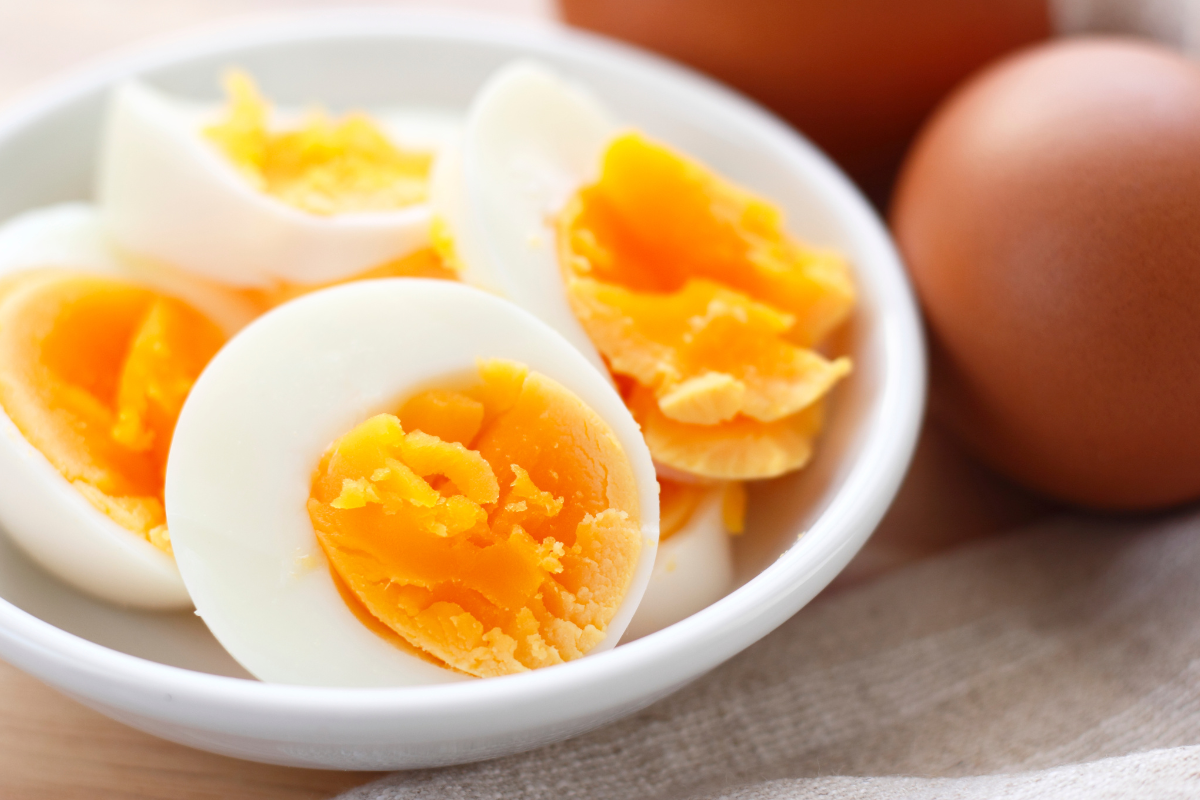
Keto trekkers, it's your turn! Keeping carbs low and fats high while backpacking might seem like a challenge, but fear not.
There are plenty of keto-friendly options that are both delicious and practical for the trail. Let's dig in!
Keto Breakfast Ideas
Start your day with a breakfast that's high in fats and low in carbs to keep your energy levels steady.
- Instant Coffee with Coconut Milk Powder: Kick off your morning with a creamy cup of coffee. Use instant coffee (like Waka Coffee, known for its smooth taste) and add some coconut milk powder (try Anthony's Organic Coconut Milk Powder) for that keto-friendly creamy texture. It's a great way to get your caffeine fix with a dose of healthy fats.
- Chia Seed Pudding: Prep this the night before in a sealable container. Mix chia seeds with water or almond milk, and let it sit overnight. In the morning, you'll have a pudding rich in omega-3 fatty acids and fiber. Add a bit of stevia or erythritol for sweetness if needed.
- Boiled Eggs: Simple yet effective. Boil some eggs before your trip for a quick, protein-rich breakfast. They can last a couple of days in your pack, especially in cooler weather.
Keto Lunch and Dinner Options
Keeping your meals varied and interesting is key to enjoying your keto adventure.
- Tuna Packets with Olive Oil: Tuna packets (like those from StarKist) are a great source of protein and omega-3 fatty acids. Drizzle some olive oil (pack a small, leak-proof bottle) for added healthy fats. Add some spices like pepper or dried herbs for extra flavor.
- Dehydrated Meat and Vegetables: Bring along dehydrated beef or chicken and some low-carb vegetables like spinach or zucchini. Rehydrate them at camp for a quick and satisfying stir-fry. Add some coconut aminos for a soy sauce substitute.
- Keto Bone Broth Packets: Look for keto-friendly bone broth packets that are easy to prepare, like those from Bare Bones. They're a great way to end a long day of hiking with a warm, comforting drink.
Keto Snack Suggestions
Snacks are crucial for keeping your energy up between meals.
- Protein Bars: There are many keto-friendly protein bars on the market. Brands like Quest and Keto Bars offer options that are low in carbs but high in fats and flavors.
- Cheese: Hard cheeses like cheddar or gouda are great for backpacking. They provide a good source of fat and protein, and most can withstand a few days without refrigeration.
- Meats: Summers sausage, salami, jerky, or meat sticks are all great options. These are all dried and cured so no refrigeration is needed.
- Nuts and Seeds: Almonds, macadamia nuts, and pumpkin seeds are all keto-friendly and packed with nutrients. They're perfect for a quick snack on the go.
Gluten-Free Options

For all you gluten-free explorers out there, navigating the world of backpacking meals without wheat can be a breeze with the right picks.
Whether you have celiac disease, a gluten intolerance, or simply prefer to avoid gluten, there are plenty of tasty and nutritious options to keep you energized on the trail.
Gluten-Free Breakfast Ideas
Kickstart your mornings with a breakfast that's both satisfying and gluten-free.
- Gluten-Free Oatmeal: A warm bowl of oatmeal is the perfect start to a chilly morning. Brands like Bob's Red Mill offer gluten-free instant oatmeal packets that are easy to prepare. Just add hot water, and voilà! Top it with some fresh fruits like berries or sliced banana for added flavor and nutrients.
- Rice Cakes with Almond Butter: Rice cakes are a light, gluten-free alternative to bread. Spread some almond butter (Justin's Almond Butter is a great choice) for a satisfying mix of carbs and protein. Drizzle a little honey on top if you like it sweet.
- Yogurt with Gluten-Free Granola: Pack some shelf-stable yogurt (like those from COYO, which are dairy-free too) and pair it with gluten-free granola for a crunchy, creamy meal. It's a good source of probiotics and energy to get your day going.
Gluten-Free Lunch and Dinner Recipes
You don't have to compromise on taste or variety with these gluten-free meal ideas for lunch and dinner.
- Instant Rice Dishes: Instant rice is a fantastic base for various meals. You can mix it with dehydrated vegetables and a protein source like canned chicken or fish. Check out brands like Minute Rice for quick-cooking options.
- Gluten-Free Pasta: Yes, you can still enjoy pasta on the trail! Brands like Barilla and Tinkyada offer gluten-free pasta that holds up well. Toss it with olive oil, garlic powder, and some dehydrated veggies for a simple yet satisfying meal.
- Quinoa Salad: Quinoa is not only gluten-free but also a complete protein, making it an excellent choice for backpacking. Cook it at home, dehydrate it, and then rehydrate it on the trail. Add nuts, dried fruits, and a squeeze of lemon for a refreshing and filling meal.
Gluten-Free Snack Options
Snacks are essential for keeping your energy up, and there are plenty of gluten-free options.
- Fruit Leather: Fruit leather is a fantastic way to get a quick sugar boost. It's lightweight, tasty, and satisfies that sweet tooth. Stretch Island is a brand known for its all-natural fruit leathers with no added sugars.
- Gluten-Free Trail Mix: Make your own trail mix with gluten-free ingredients like nuts, seeds, and dried fruits. You can also find pre-made gluten-free trail mixes in stores – just check the labels to be sure.
- Popcorn: Believe it or not, popcorn is a great gluten-free snack that's full of fiber. Pack some pre-popped popcorn (SkinnyPop is a good choice) for a light, crunchy snack.
Other Dietary Considerations
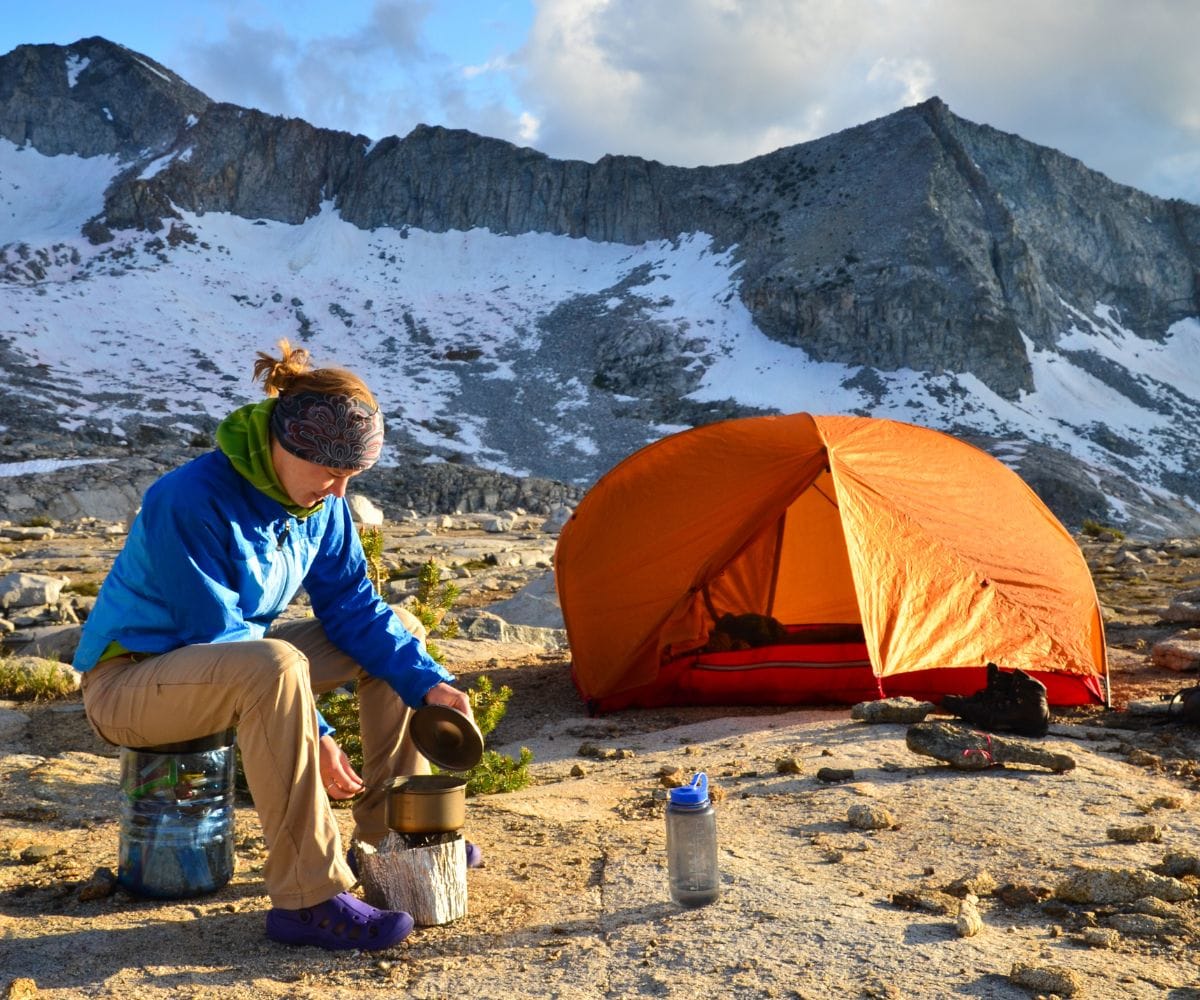
Navigating dietary restrictions while backpacking can seem daunting, but don't worry!
Whether you're vegan, vegetarian, lactose intolerant, or watching your sodium intake, there are plenty of delicious and practical options to keep you well-fed and energized on the trail.
Vegan and Vegetarian Meal Ideas
Plant-based eaters, rejoice! There are numerous tasty and nutrient-packed options for you.
- Miso Soup: Start your meal with a light and warming miso soup. It's easy to pack and just requires hot water. You can find instant miso soup packets at most stores, like those from Kikkoman, which are often vegan-friendly.
- Instant Mashed Potatoes: A filling and comforting option, instant mashed potatoes can be a great base for a meal. Idahoan makes some delicious varieties, and you can spice them up with added dehydrated veggies or nutritional yeast for a cheesy flavor.
- Lentil or Bean Salads: Lentils and beans are great sources of protein and fiber. You can cook and dehydrate them at home, then rehydrate on the trail for a quick salad. Mix in some olive oil, lemon juice, and your favorite spices for a hearty and satisfying meal.
Ideas for Lactose Intolerance
Lactose intolerant? No need to skip the creamy stuff. There are alternatives that'll let you enjoy your meals worry-free.
- Lactose-Free Powdered Milk: For your morning cereal or coffee, use lactose-free powdered milk, like the one from NOW Foods. It’s a great way to enjoy milk without the discomfort.
- Non-Dairy Cheese: Brands like Daiya offer a range of non-dairy cheese products that can add flavor to your meals without the lactose.
- Almond or Soy Milk Singles: These are great for adding to coffee or tea and can also be used in cooking. Look for shelf-stable options like those from Silk, which come in convenient single-serve packages.
Suggestions for Low-Sodium Diets
Watching your salt intake? There are plenty of ways to flavor your meals without relying on salt.
- Homemade Dehydrated Meals: One of the best ways to control sodium is to make your own dehydrated meals. Use fresh herbs, spices, and salt substitutes to season your meals before dehydrating them.
- No-Salt-Added Canned Goods: Canned beans or vegetables with no added salt can be a great base for many meals. Just make sure to drain and rinse them before packing to reduce the weight.
- Herbs and Spices: Enhance the flavor of your meals with a variety of herbs and spices. Pack small amounts of garlic powder, cumin, curry powder, or dried herbs to add flavor without the salt.
Cooking and Preparation Tips
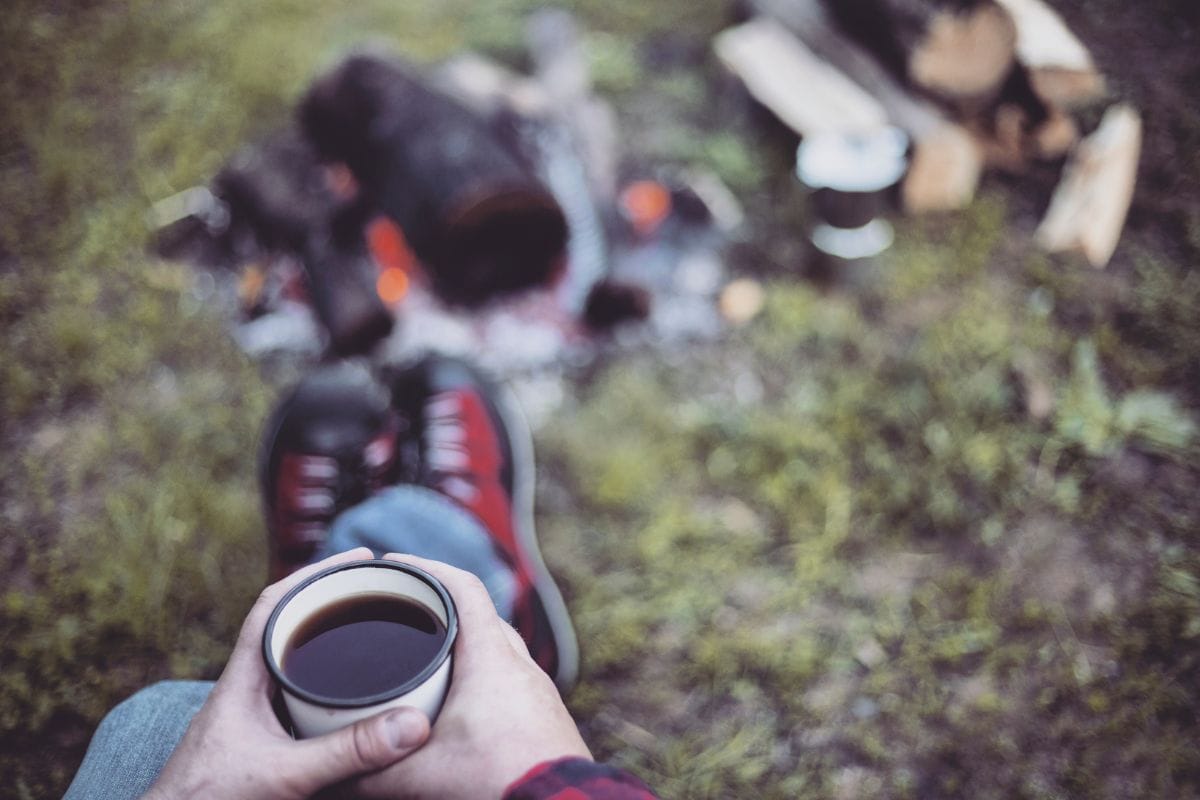
Let's turn our focus to the nitty-gritty of trail cooking and meal prep. With a few smart tips and tricks, you can transform your campsite into a gourmet kitchen (well, almost!).
Let's get into how you can make the most of your cooking experience in the great outdoors.
How to Use Boiling or Hot Water Effectively
Boiling water is the backbone of most trail cooking, but it's more than just cranking up your portable stove.
- Pre-Soak Dehydrated Meals: Give your dehydrated meals a head start by soaking them in cold water a few minutes before you plan to cook. This reduces cooking time and fuel usage.
- Insulate Your Cooking Pot: After adding boiling water to your meal, insulate the pot or bowl to retain heat. A cozy made from a folded towel or even your beanie can do the trick. This method lets your food continue cooking without extra heat.
- Use a Windscreen: Always use a windscreen with your stove to maximize heat efficiency. This can significantly reduce the time and fuel needed to boil water.
Making the Most of Local Grocery Store Finds
You don't always have to go fancy with specialized backpacking food. Your local grocery store has plenty of hidden gems.
- Pre-Packaged Meals: Look for pre-packaged meals that just require hot water. Couscous, instant rice, and noodle dishes can be great options. Add some packaged tuna or chicken for protein.
- Instant Soup Packs: Instant soup packs are lightweight and easy to cook. They can be a great starter or a light meal on their own. You can jazz them up with some fresh or freeze-dried veggies or pre-cooked meat.
- Bulk Bins: Explore the bulk bins for items like nuts, dried fruits, and grains. You can buy exactly the amount you need and mix and match to create your own trail mix or granola.
- Baby Food Aisle: Take a walk down this isle and you'll find pouches of pureed fruits and vegetables, instant cereals of oatmeal or rice packets that just need water, lightweight snack bars or snack puffs, dehydrated fruits and berries perfect for your morning oatmeal.
- Snack Bars: Often softer and easier to chew, these can be a good quick energy source.
DIY Meal Ideas Like Homemade Trail Mix and Dehydrated Meals
Getting creative with DIY meals can be both fun and rewarding.
- Homemade Trail Mix: Mix your favorite nuts, seeds, dried fruits, and maybe some dark chocolate chips for a custom trail mix. It's not only cheaper but also tailored to your taste.
- Dehydrated Meals: Invest in a food dehydrator to make your own dehydrated meals. You can dehydrate cooked meats, vegetables, and fruits. This not only allows you to control the ingredients and portions but also saves money in the long run.
- Spice Kits: Create a mini spice kit with your favorite seasonings. Small, lightweight containers or even straw segments sealed at the ends can hold just enough spice to liven up your meals.
Packing and Storage
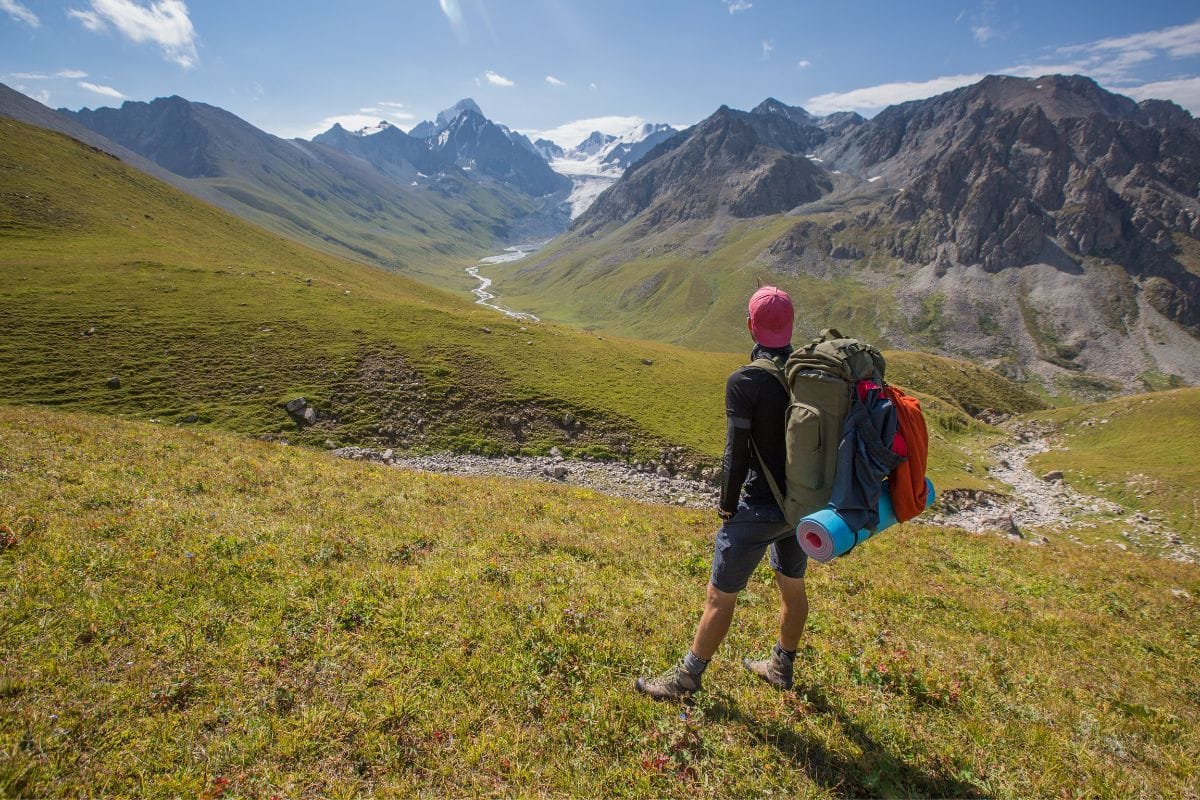
So, you've got your meals all planned out – awesome! Now, let's talk about packing and storing your food.
Doing this right can mean the difference between a hassle-free mealtime and a potential wildlife encounter or, worse, spoiled food. Let's dive into some best practices.
Best Practices for Packing Your Food Bag
Packing your food efficiently is crucial, especially when you're carrying everything on your back.
- Use Lightweight, Durable Containers: Opt for resealable bags or lightweight containers to pack your food. Brands like Stasher offer reusable silicone bags if your trying to stay away from plastic.
- Organize by Meal: Pack your food in the order you'll eat it. Breakfast items on top if you’re hitting the trail early, for example. This prevents rummaging and keeps your pack organized.
- Balance Your Load: Distribute the weight evenly in your backpack. Heavier items like canned goods should be closer to your back and higher up in the pack.
How to Ensure Food Stays Fresh
Keeping your food fresh, especially on longer trips, requires a bit of planning.
- Choose Shelf-Stable Ingredients: Opt for foods that are naturally shelf-stable, like dehydrated meals, nuts, seeds, and hard cheeses. These items don’t require refrigeration and have a longer shelf life.
- Protect from Elements: Use waterproof containers or bags to protect your food from rain or river crossings. You don't want soggy sandwiches!
- Use Oxygen Absorbers: If you’re packing homemade dehydrated meals, consider using oxygen absorbers. These little packets help keep your food fresh longer by removing oxygen that can cause spoilage.
Tips for Minimizing Waste and Respecting the Environment
Leave no trace – it's the golden rule of the outdoors. Here's how to minimize waste and respect Mother Nature.
- Pack Out What You Pack In: Whatever you bring with you, make sure it leaves with you too. This includes food scraps, packaging, and even biodegradable items.
- Reusable Containers: Opt for reusable containers and utensils. Not only do they reduce waste, but they also save you from the hassle of disposable items.
- Compostable Bags for Scraps: If you have food scraps, use compostable bags to store them until you can properly dispose of them. This helps reduce the impact on the environment.
- Be Wildlife Aware: Store your food in a bear canister or hang it from a tree at night (using a bear bag). This keeps wildlife safe and ensures they don’t become accustomed to human food.
Advanced Tips and Tricks

You've got the basics down, but how about taking your trail cooking to the next level?
Let's spice things up (literally) and explore how you can create gourmet meals and desserts that'll make your fellow hikers envious.
Creating Gourmet Meals Like Backpacking Desserts
- Desserts on the Trail: Who says you can't enjoy a sweet treat in the wilderness? Pack ingredients for simple desserts like a chocolate fondue (melt some dark chocolate chips and dip dried fruit) or instant cheesecake (mix powdered cream cheese with a little sugar and lemon juice).
- Dehydrated Fruit Crisps: Bring along dehydrated fruits like apples or peaches. At camp, rehydrate them slightly, top with a crumble made from crushed nuts and a bit of honey or maple syrup, then heat over your stove for a delicious fruit crisp.
Incorporating Spices and Condiments
A little spice can go a long way in elevating your meals.
- Portable Spice Kits: Create a mini spice kit with your favorite flavors. Small containers or even repurposed tic-tac boxes can be great for this. Think garlic powder, curry powder, dried herbs – the options are endless.
- Hot Sauce for the Win: A small bottle of hot sauce, like Tabasco or Sriracha, can add a kick to any meal. Plus, it's a great way to liven up simpler dishes.
- Olive Oil Packets: Olive oil isn't just for cooking; it's a great flavor enhancer. Single-serve packets are available and are super convenient for the trail.
The Use of Freeze-Dried Ingredients for Hearty Meals
Freeze-dried ingredients can be a game-changer for backpacking meals.
- Hearty Stews and Soups: Use freeze-dried meats and vegetables to create stews and soups. They're lightweight, have a long shelf life, and rehydrate quickly with hot water.
- DIY Freeze-Drying: If you're really into it, consider investing in a home freeze-dryer. This lets you prepare and preserve your favorite meals, from spaghetti Bolognese to ratatouille.
Frequently Asked Questions
What is the best lightweight food for backpacking?
The best lightweight food for backpacking includes things like trail mix, instant noodles, and dehydrated meals. These foods are easy to carry, quick to make, and give you lots of energy for hiking. They're tasty and perfect for adventures!
What can you eat backpacking without cooking?
When backpacking without cooking, you can eat snacks like nuts and trail mix, ready-to-eat tuna packets, hard cheeses, summer sausage, and dried and dehydrated fruits.
You can also enjoy pre-made peanut butter and jelly sandwiches (eat this on your first or second day on the trail so they're is no spoilage), and beef jerky. These foods are easy to pack and don't need cooking.
Green Belly Meals are perfect if you don't want to do any cooking at all. They have high a nutritional value, calorie dense, taste great, and lightweight.
What to have for quick lunch backpacking?
For a quick lunch while backpacking, try peanut butter and jelly sandwiches, pre-packed tuna or chicken salads, and energy bars. These are easy to carry and don't need cooking. They give you energy and taste good too!
How do backpackers carry food?
Backpackers use special bags called stuff sacks or dry bags to keep their food organized and dry. They also use bear canisters or hanging bags to protect food from animals. These containers are put in the main part of the backpack for easy carrying.
Before You Go...
